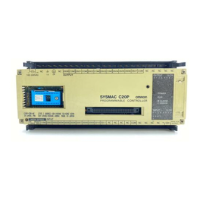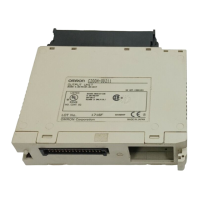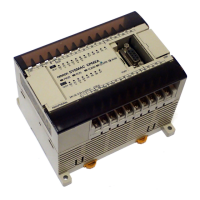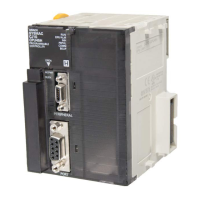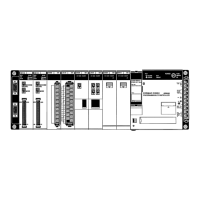Glossary
612
grammable Controllers are used to automate control of external devices. Al-
though single-unit Programmable Controllers are available, building-block Pro-
grammable Controllers are constructed from separate components. Such Pro-
grammable Controllers are formed only when enough of these separate compo-
nents are assembled to form a functional assembly, i.e., there is no one individu-
al Unit called a PC.
programmed alarm An alarm given as a result of execution of an instruction designed to generate the
alarm in the program, as opposed to one generated by the system.
programmed error An error arising as a result of the execution of an instruction designed to gener-
ate the error in the program, as opposed to one generated by the system.
programmed message A message generated as a result of execution of an instruction designed to gen-
erate the message in the program, as opposed to one generated by the system.
Programming Console The simplest form or programming device available for a PC. Programming
Consoles are available both as hand-held models and as CPU-mounting mod-
els.
Programming Device A Peripheral Device used to input a program into a PC or to alter or monitor a
program already held in the PC. There are dedicated programming devices,
such as Programming Consoles, and there are non-dedicated devices, such as
a host computer.
PROM Programmable read-only memory; a type of ROM into which the program or
data may be written after manufacture, by a customer, but which is fixed from
that time on.
PROM Writer A peripheral device used to write programs and other data into a ROM for per-
manent storage and application.
prompt A message or symbol that appears on a display to request input from the opera-
tor.
protocol The parameters and procedures that are standardized to enable two devices to
communicate or to enable a programmer or operator to communicate with a de-
vice.
PV See
present value
.
Rack An assembly that forms a functional unit in a Rack PC System. A Rack consists
of a Backplane and the Units mounted to it. These Units include the Power Sup-
ply, CPU, and I/O Units. Racks include CPU Racks, Expansion I/O Racks, and
I/O Racks. The CPU Rack is the Rack with the CPU mounted to it. An Expansion
I/O Rack is an additional Rack that holds extra I/O Units. An I/O Rack is used in
the C2000H Duplex System, because there is no room for any I/O Units on the
CPU Rack in this System.
rack number A number assigned to a Rack according to the order that it is connected to the
CPU Rack, with the CPU Rack generally being rack number 0.
Rack PC A PC that is composed of Units mounted to one or more Racks. This configura-
tion is the most flexible, and most large PCs are Rack PCs. A Rack PC is the
opposite of a Package-type PC, which has all of the basic I/O, storage, and con-
trol functions built into a single package.
RAM Random access memory; a data storage media. RAM will not retain data when
power is disconnected.
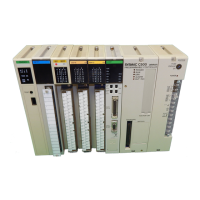
